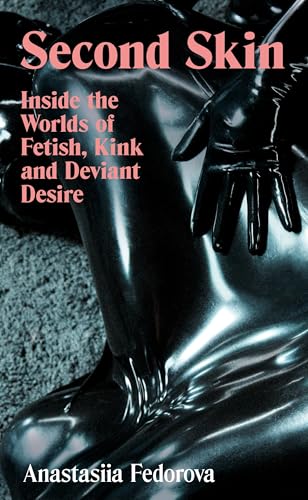We are all fetishists, says Anastasiia Fedorova in her new book, which takes a deep dive into kink
In ‘Second Skin’, writer and curator Fedorova takes a tour through the materials, objects and power dynamics we have fetishised
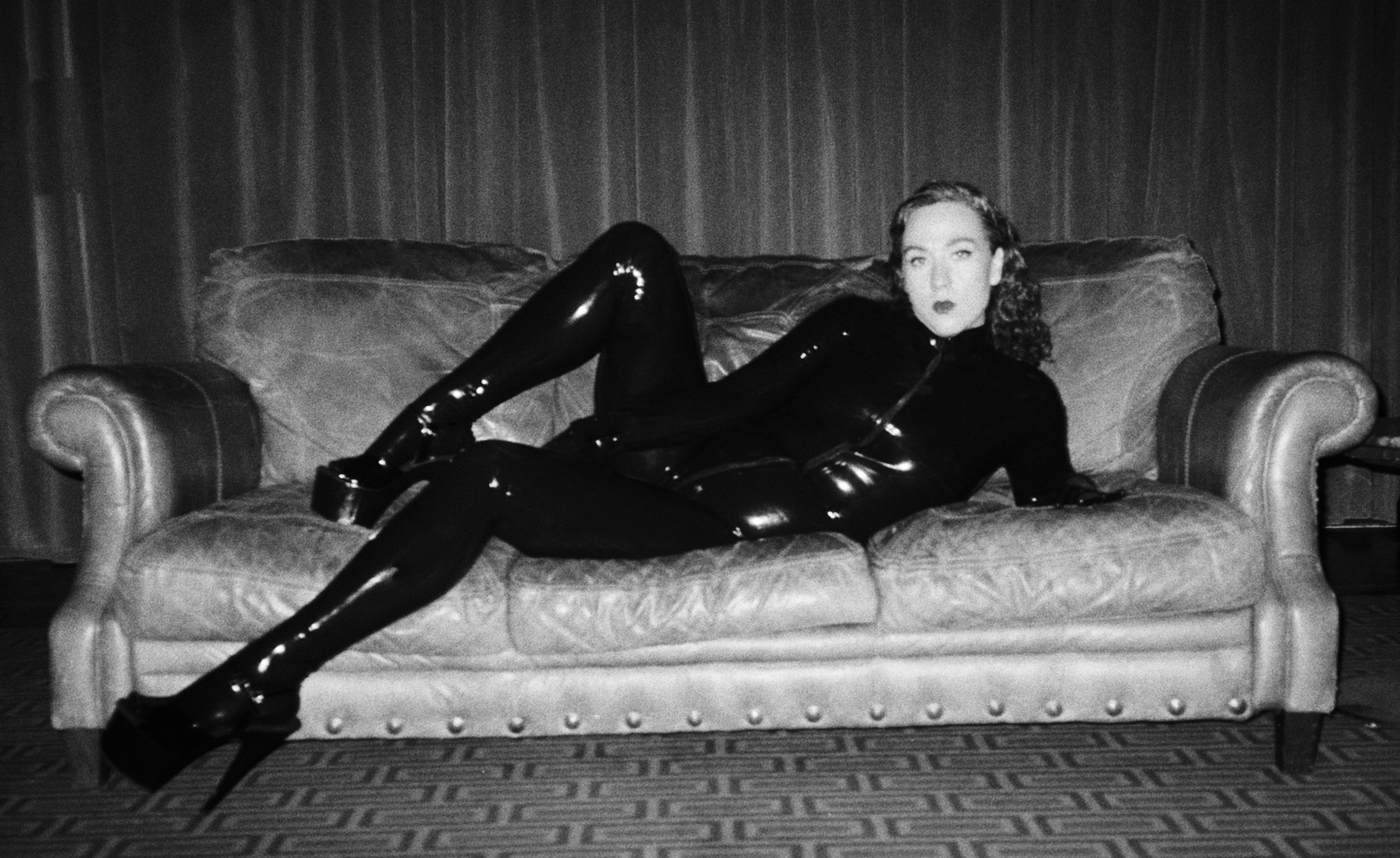
A man in a complete ensemble of leather jackets and pants faces the wall, holding a bundle of chains. The photograph, printed in the middle of writer and curator Anastasiia Fedorova’s book Second Skin: Inside the Worlds of Fetish, Kink and Deviant Desire, is a clear documentation of a community, the brilliant sheen of soft leather folds, beckoning us. When I call Fedorova the day after her launch, British Vogue has just released its cover, the sexual dynamics of the leather community echoed in Dua Lipa bracing against the wall, in a Givenchy leather corset and latex lingerie by Elissa Poppy. ‘I just looked at it,’ laughs Fedorova when I ask if she’s seen it. ‘It’s so crazy!’
It’s a very interesting time for Fedorova to be inviting readers into the world of kink and fetish, when Dua Lipa is biting leather on a mainstream magazine cover and Sabrina Carpenter is facing flak for taking women back centuries for puppy play on her album cover – it might feel like we're back to Gayle Rubin in 1984 urging feminists to view the sexual play of sadomasochism in lesbian communities differently from the power dynamics of gender politics – although there is a question of capitalistic image-making at play here. ‘There are uncanny parallels now with the rise of trans-exclusionary feminism and very sex-negative feminism as well,’ says Fedorova. ‘It’s actually crazy how some of these things written 30 years ago are still relevant and the same stigmas still stand.’
A blonde girl embraces a leatherdyke, placing her hands on her partner’s leather cap. This was Jackie and Shar in San Francisco in 1993, captured by the photojournalist Phyllis Christopher, who featured the photograph in her book Darkroom: San Francisco Sex and Protest, 1988-2003 – which both Fedorova and I had signed up to get during the pandemic. ‘I discovered my interest in kink and fetish after the pandemic,’ she says. ‘It was just a very intense and introspective time where we all sat at home and had to think about our lives and how we relate to our bodies.’ This was true across the board for many queer people, and it finally made Fedorova be more open about kink and start to write about it post-pandemic. That’s also when she embarked on some personal writing projects, which led to the first draft of what would become Second Skin.
A couple of seasons ago, Demna sent models down the New York Stock Exchange for Balenciaga in gimp masks – and even before that, Kim Kardashian’s struggling to get into her ‘wet’ latex dress for The Met Gala, has imprinted itself on cultural memory. Fedorova herself grew up in post-communist-era Russia, surrounded by the wild and scary delight of ownership. She digs into our culture of consumerism and divides the book according to items familiar to us from popular culture like gimp masks, leather or latex, which also have a sexual and queer history. ‘So, isolating an object could allow someone who might not think about fetish on a day-to-day basis to think about their close relationships with objects,’ says Fedorova.
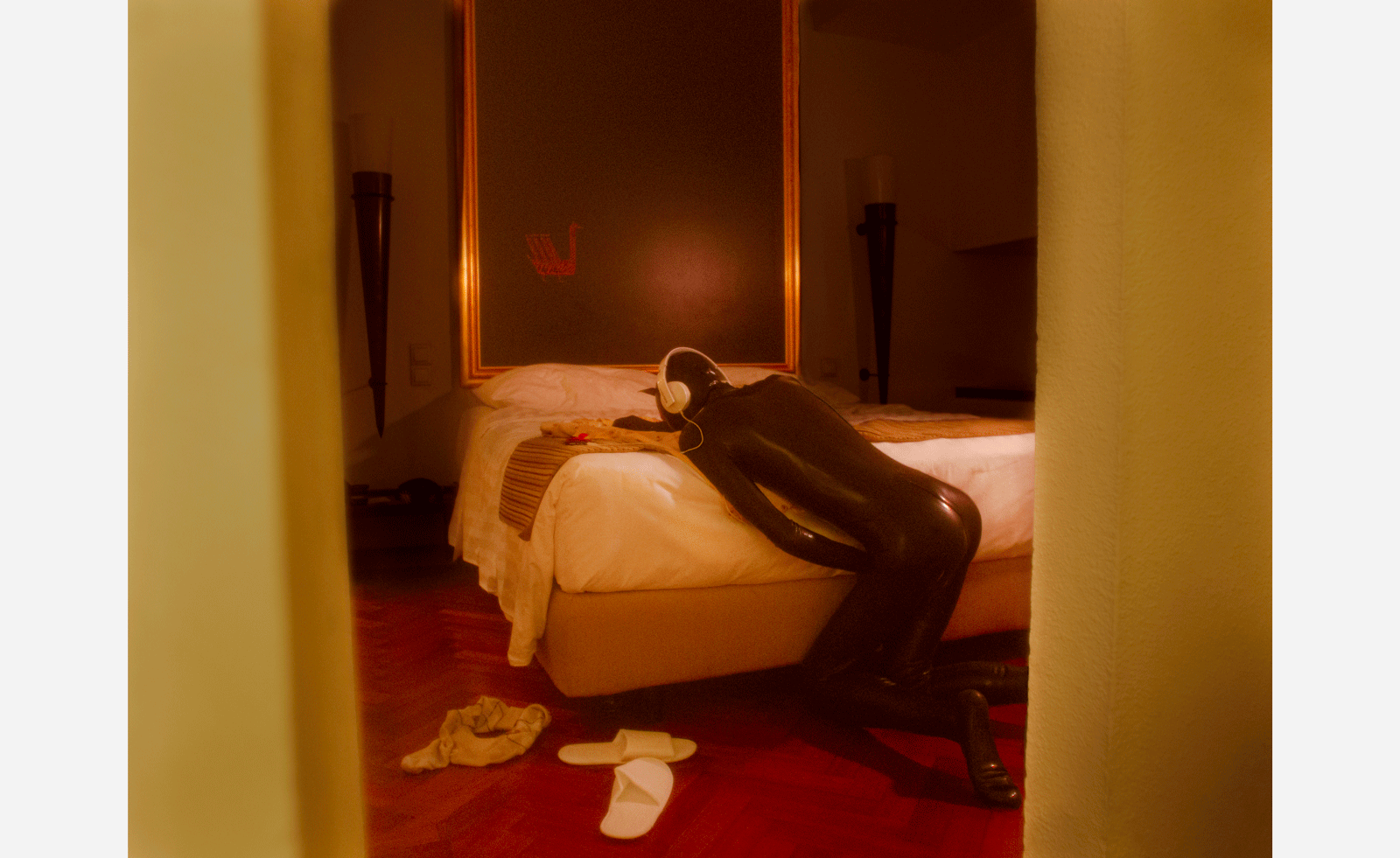
ASMR by Bart Seng Wen Long
While Fedorova linking commodity fetishism and sexual fetish might originally seem like a stretch, it logically comes together considering how the latter has grown with developments in fashion; think of the formation of the Macintosh Society in 1967, right after the macintosh became widely available in the early 20th century – members would gather and watch fashion shows by rainwear manufacturers. A Phyllis Christopher photograph of a leatherdyke in a pair of jeans held in place with a belt, hanging dangerously low to reveal perfectly white underwear embossed, could double as a Calvin Klein or Miu Miu campaign today. ‘I worked in fashion for quite a long time, since I was 19,’ says Fedorova, ‘It really made me aware of the commodity fetishism of our lives – like [the way] Louboutin heels are fetishised in fashion and the fetish world alike.’ Japanese designer Atsuko Kudo works with latex couture, although Fedorova also gushes profusely about the leather jackets in Haider Ackermann’s Tom Ford debut.
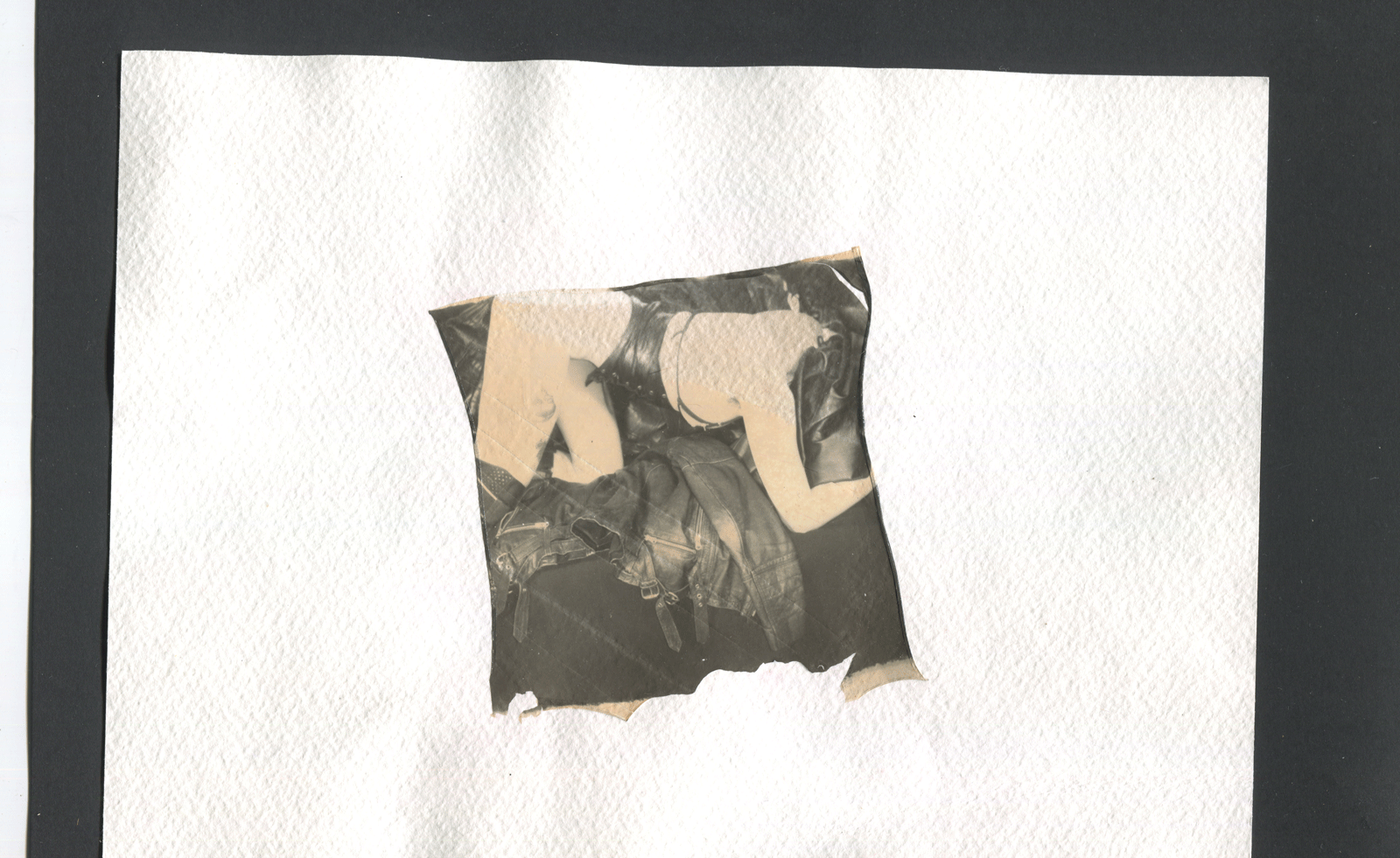
Coming To Power by Jean Cleverley
It's strange how talking about fetish always leads to Freud, who, like most 20th century psychoanalytic literature, agreed that women didn’t have the imagination to be ‘true perverts’, as Fedorova mocks – and therefore, she says, she harped upon her personal history of becoming a fetishist and whether it was her hyperfixation on illness or anxiety attacks that led her to use sex as an escape and go on to sexualise white shirts or the arousing smell of an underground car park. She has co-authored her body into one of a queer, pleasure-seeking pervert, she writes, much against how society wanted her to perform. ‘Sexuality has always been a way to recreate myself and go further,’ she admits. ‘And that speaks very much about being queer as you could hide your true self fairly easily.’
She had to rethink how sex is usually written about, says Fedorova, considering that’s usually for heterosexual audiences and only sees sex as involving penetration. ‘Kink and BDSM is seen as quite glamorous in a heterosexual context,’ she says. ‘50 Shades of Grey is basically wealth porn, more than [it is] about BDSM. [Writer] Patrick Califia and anthologies like The Second Coming, which were from the leatherdyke scene, were foundational for me rethinking what sex is about even.
Receive our daily digest of inspiration, escapism and design stories from around the world direct to your inbox.
‘For many of us, seeing fashion popularise leather and latex garments, and [drag queen and burlesque performer] Violet Chachki and [design brand] Fecal Matter, who follow that lifestyle and showcase it online, being part of the industry was instrumental. Fashion often takes from communities on the fringes, like now we have the stripper aesthetic, after [the film] Anora,’ explains Fedorova. Moreover, actor Julia Fox faced flack a couple of years ago for an extreme eyeliner look, exactly similar to a look in Dressing for Pleasure (1977), a documentary film on fetish fashion. ‘It’s interesting how the internet changed the community,’ acknowledges Fedorova. ‘You just meet people online in very unpredictable ways, which only existed in ways of magazines and personal ads, back in the day.’
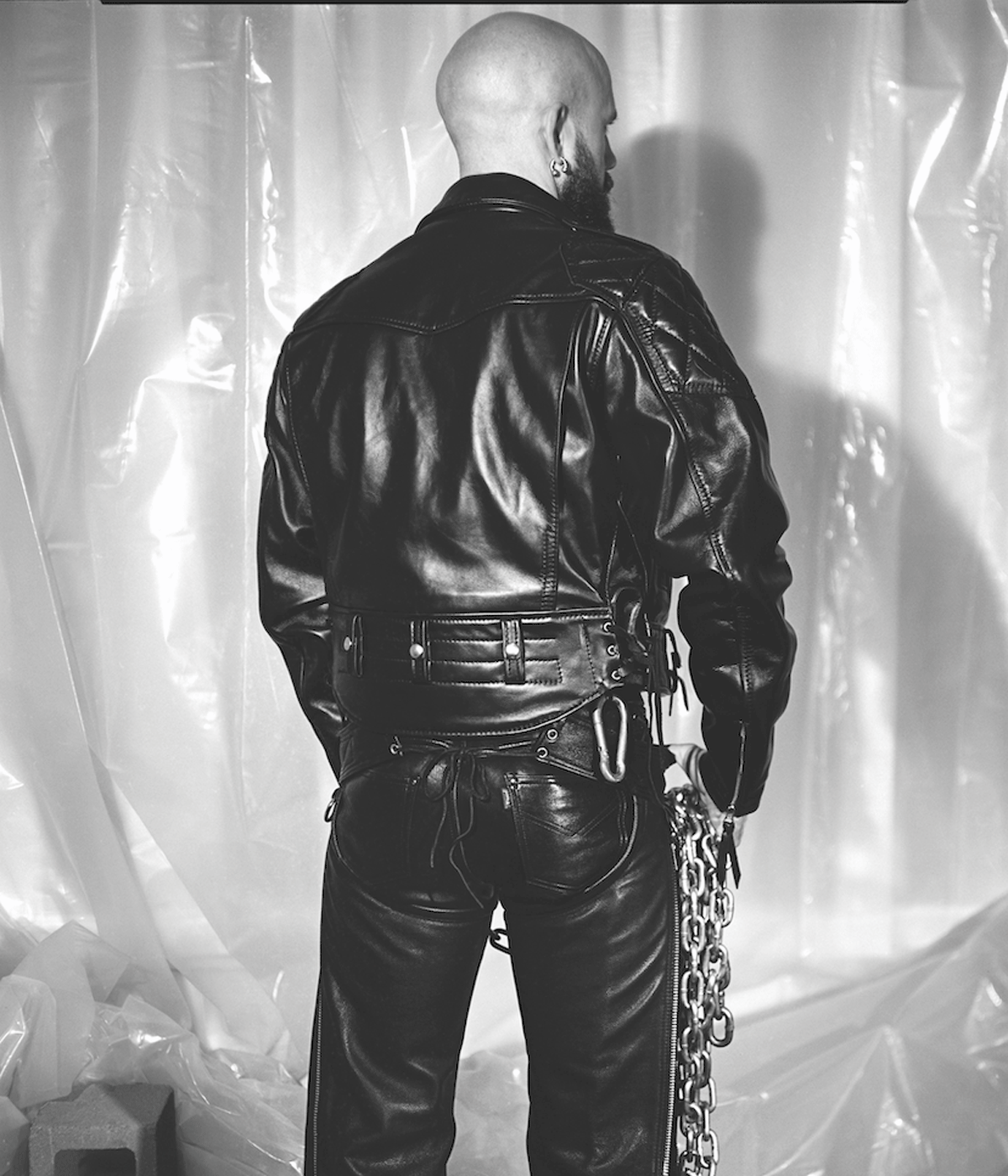
Simon with Chain by Steven Harwick for Bound Leather Zine
Queer desirability has in turn influenced sex appeal on the platform – it’s hot to be a latex-wearing woman with a long ponytail, so often seen in superhero comics and now on Dua Lipa, echoing the dominatrix. ‘She promises the touch of the divine, the carnal, the underworld,’ writes Fedorova in Second Skin. ‘Her image is desirable – and fetishised – but it conceals a presence which is feared.’ The ultimate power the dominatrix wields is to be in control of the image and the real lived experience. If you’re familiar with the visual language of kink and fetish, you see it everywhere, notes Fedorova. However, with online censorship, what’s acceptable is changing. ‘We’ve got deepfakes and AI-generated porn,’ she says. ‘Online verbiage is becoming generic and upbeat, particularly when AI generates texts. So maybe we’ll see a resurgence of things which Gucci and Chanel can’t offer – darker, stranger and closer to the body. It felt important to do something in book format, as the [printed] written word can’t be censored in the way online content is. It also allows more intimate engagement with an idea.’
Desires are individual, which can be problematic, and Fedorova, without getting into pathologising, highlights the militaristic desires of Tom of Finland, recently reflected in the D2squared show earlier this year; of Brigitte Nielsen in a police uniform, hat and sunglasses, so reflective of Tom of Finland. Activist Arnie Kantrowitz would write about his shock in encountering a member of the Gay Activists Alliance in the 1980s, fetishising a swastika. ‘We all live in society, which has a power structure,’ says Fedorova. ‘We are constantly entering power relationships in our day-to-day lives, so trying to unpack these things or playing with power is maybe one way to become more aware of it – and some people are really drawn to that.’
Through this, Fedorova is also trying to create a language of speaking about the disreputable. Before the book, she worked on the HÄN archive, dedicated to dyke, lesbian, trans, non-binary and gender non- conforming communities and their creative heritage. It is a certain kind of archiving of the moment, a sort of minuscule dictionary into the fetish scene. ‘I’m not necessarily answering questions, but asking the uncomfortable ones,’ she shrugs. ‘We don’t see these things represented in mainstream TV because none of the politicians want to stand for sex worker rights. In the same way that TV executives don’t want to say, “yeah let’s do something about kink”. People are still worrying about judgement and reputation.’ Which is why, while London club Torture Garden still runs and there are sex positive and fetish events, there’s always a feeling that they could disappear any moment. ‘Licence laws and authorities might not completely understand what it’s about, or the person running it [might] decide they’re too tired,’ says Fedorova. ‘It’s a similar feeling of wondering if my friends are still around on social media or if they’ve been kicked off again.’
Fetish is a transformation and becoming something more than one’s body. At the end of the night, it’s the disappointment in realising that one must return to the body. ‘It’s escapism partly,’ says Fedorova, ‘as it allows you that extreme intimacy, but the sadness is also like the high we always chase! There’s always more to try for.’ It’s really a certain kind of momentary erotic world-building complete with fetish gear and what helps counter the sadness is delving into the community you find, she asserts. Kink and fetish are not for everyone, but through this creative approach to sexuality, Fedorova hopes to create more conversations around the erotic. ‘It’s challenging to go deep into who we are and what stops us from living authentically,’ she notes. ‘So, this takes people on a journey and [to] think about the erotic as something which can be part of the broader culture.’
Upasana Das is a freelance writer working on fashion, art and culture. She has written for NYT, Dazed, Interview Mag, Vogue India and Harper's among others.
-
 Everything to look forward to in fashion in 2026, from (even more) debuts to the biggest-ever Met Gala
Everything to look forward to in fashion in 2026, from (even more) debuts to the biggest-ever Met GalaWallpaper* looks forward to the next 12 months in fashion, which will see the dust begin to settle after a year of seismic change in 2025
-
 Five watch trends to look out for in 2026
Five watch trends to look out for in 2026From dial art to future-proofed 3D-printing, here are the watch trends we predict will be riding high in 2026
-
 Five travel destinations to have on your radar in 2026
Five travel destinations to have on your radar in 2026The cultural heavyweights worth building an itinerary around as culture and creativity come together in powerful new ways
-
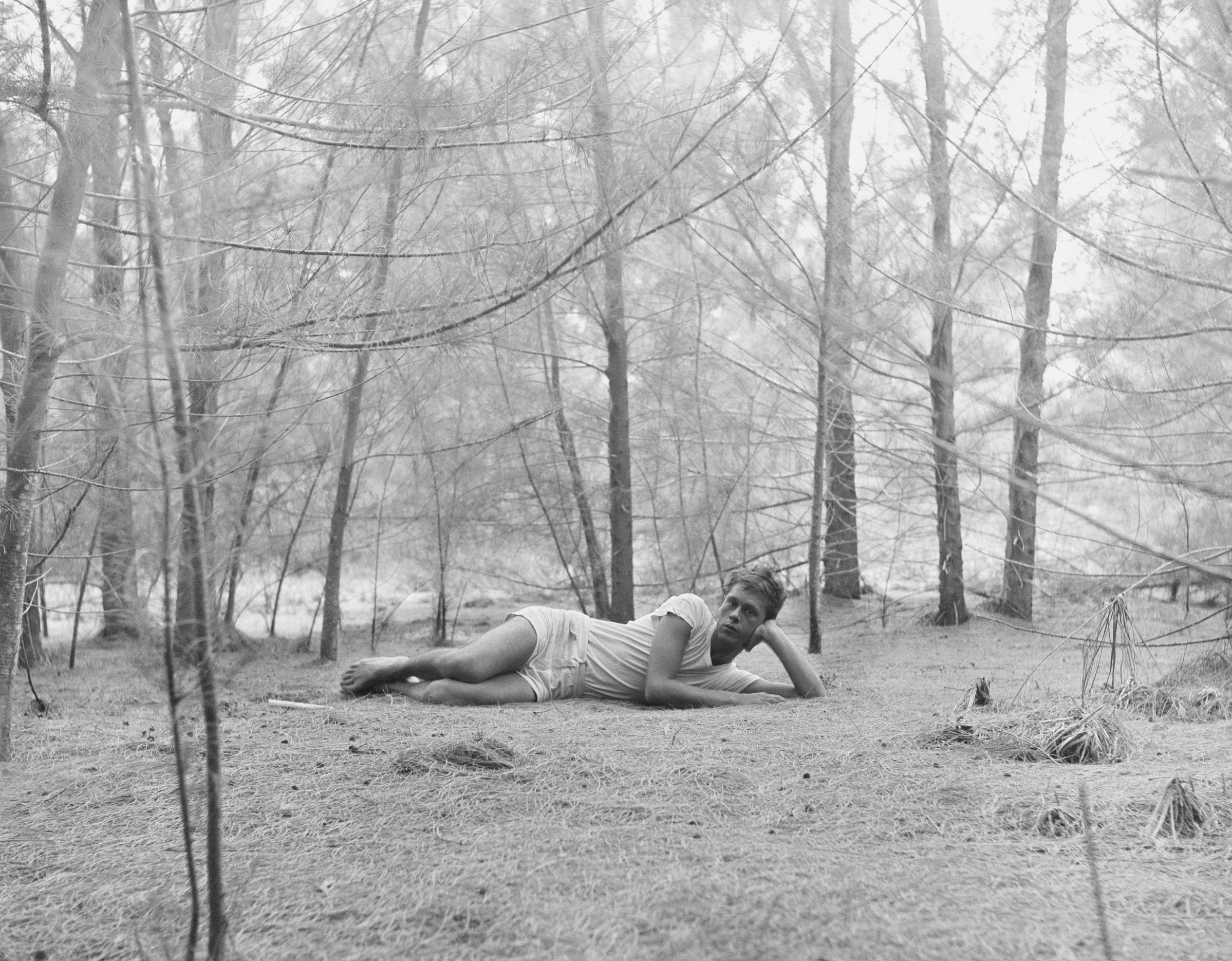 Inside the seductive and mischievous relationship between Paul Thek and Peter Hujar
Inside the seductive and mischievous relationship between Paul Thek and Peter HujarUntil now, little has been known about the deep friendship between artist Thek and photographer Hujar, something set to change with the release of their previously unpublished letters and photographs
-
 Nadia Lee Cohen distils a distant American memory into an unflinching new photo book
Nadia Lee Cohen distils a distant American memory into an unflinching new photo book‘Holy Ohio’ documents the British photographer and filmmaker’s personal journey as she reconnects with distant family and her earliest American memories
-
 Out of office: The Wallpaper* editors’ picks of the week
Out of office: The Wallpaper* editors’ picks of the weekThe rain is falling, the nights are closing in, and it’s still a bit too early to get excited for Christmas, but this week, the Wallpaper* team brought warmth to the gloom with cosy interiors, good books, and a Hebridean dram
-
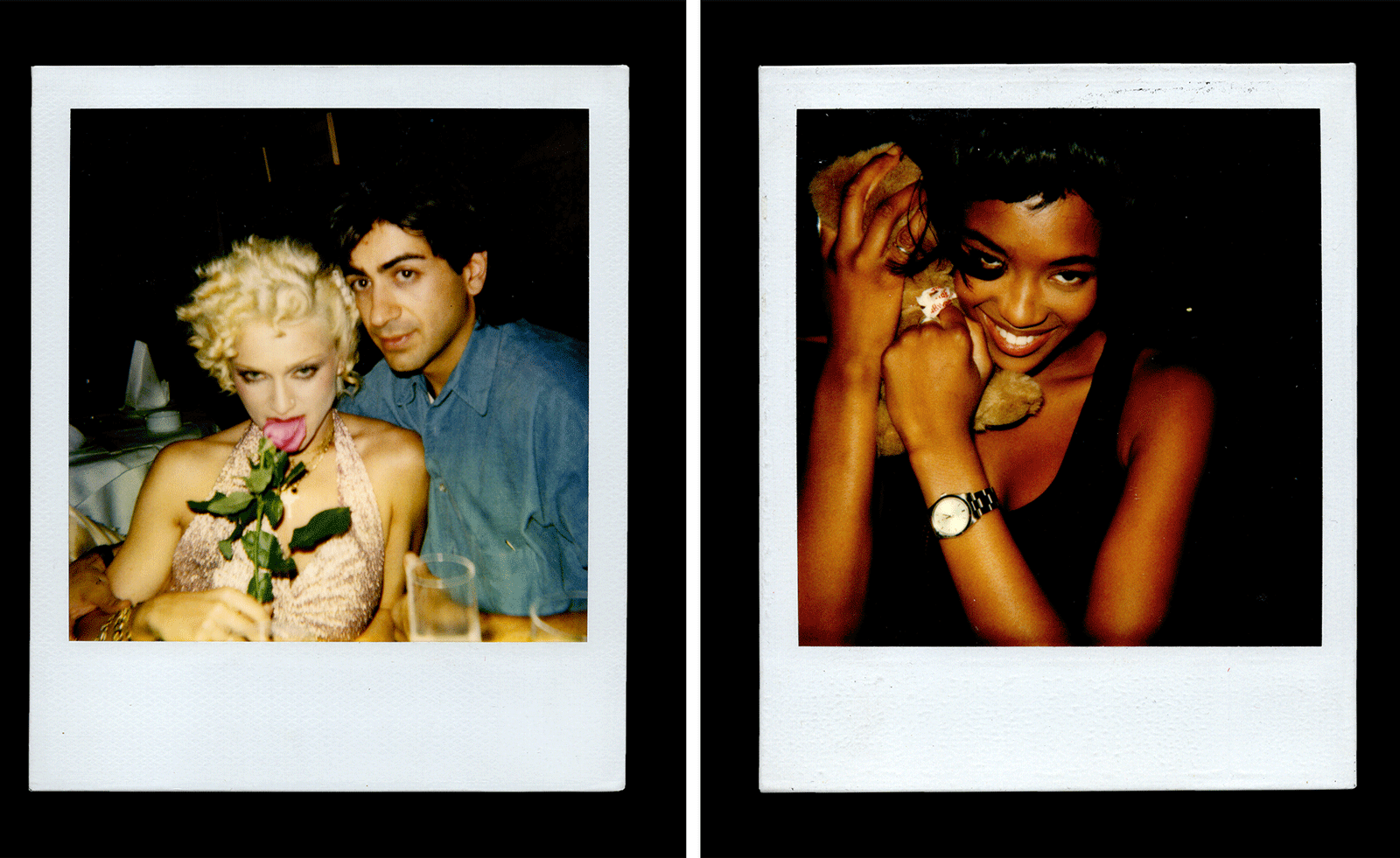 Inside Davé, Polaroids from a little-known Paris hotspot where the A-list played
Inside Davé, Polaroids from a little-known Paris hotspot where the A-list playedChinese restaurant Davé drew in A-list celebrities for three decades. What happened behind closed doors? A new book of Polaroids looks back
-
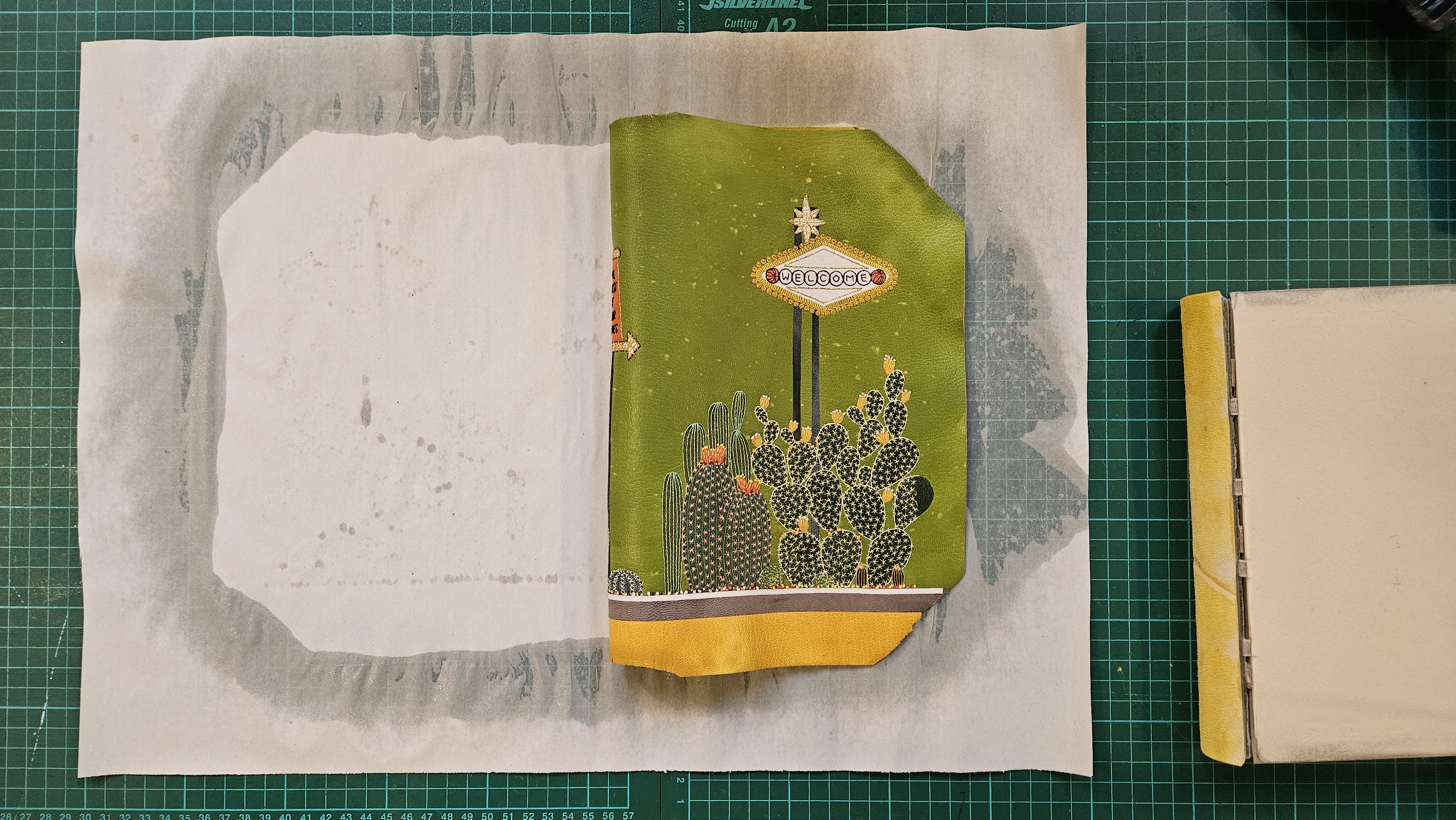 Inside the process of creating the one-of-a-kind book edition gifted to the Booker Prize shortlisted authors
Inside the process of creating the one-of-a-kind book edition gifted to the Booker Prize shortlisted authorsFor over 30 years each work on the Booker Prize shortlist are assigned an artisan bookbinder to produce a one-off edition for the author. We meet one of the artists behind this year’s creations
-
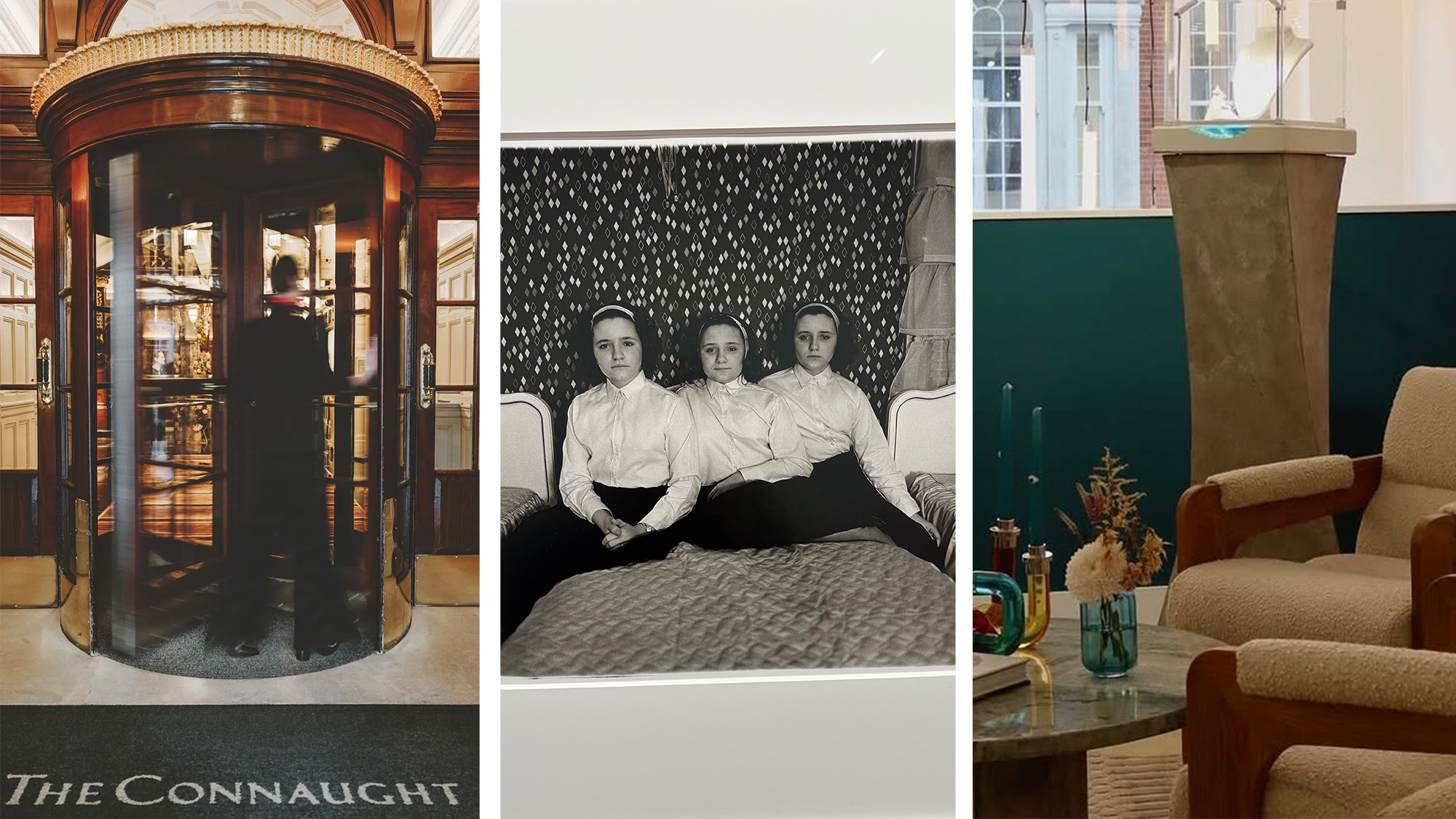 Out of office: The Wallpaper* editors’ picks of the week
Out of office: The Wallpaper* editors’ picks of the weekThis week, the Wallpaper* editors curated a diverse mix of experiences, from meeting diamond entrepreneurs and exploring perfume exhibitions to indulging in the the spectacle of a Middle Eastern Christmas
-
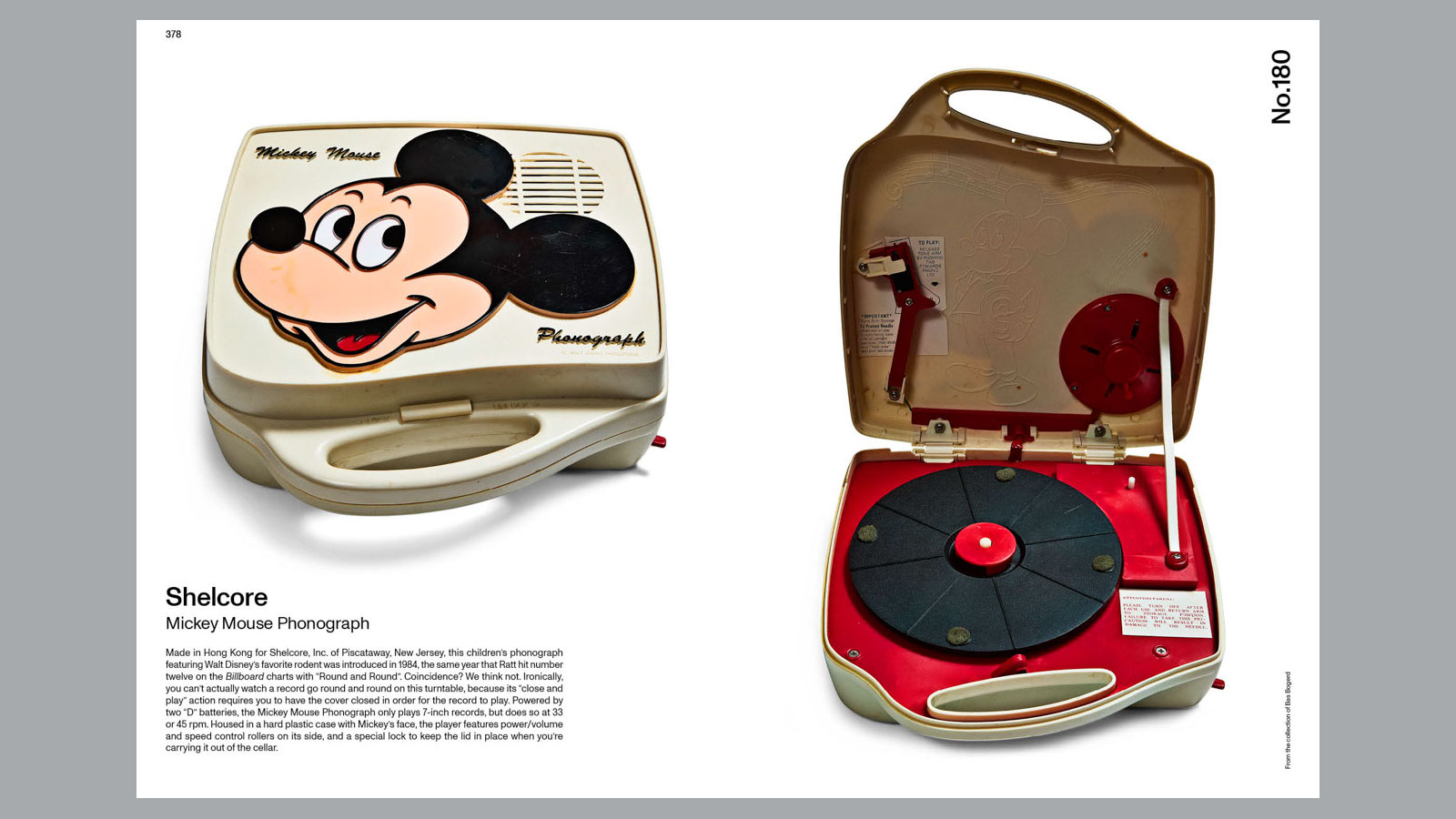 14 of the best new books for music buffs
14 of the best new books for music buffsFrom music-making tech to NME cover stars, portable turntables and the story behind industry legends – new books about the culture and craft of recorded sound
-
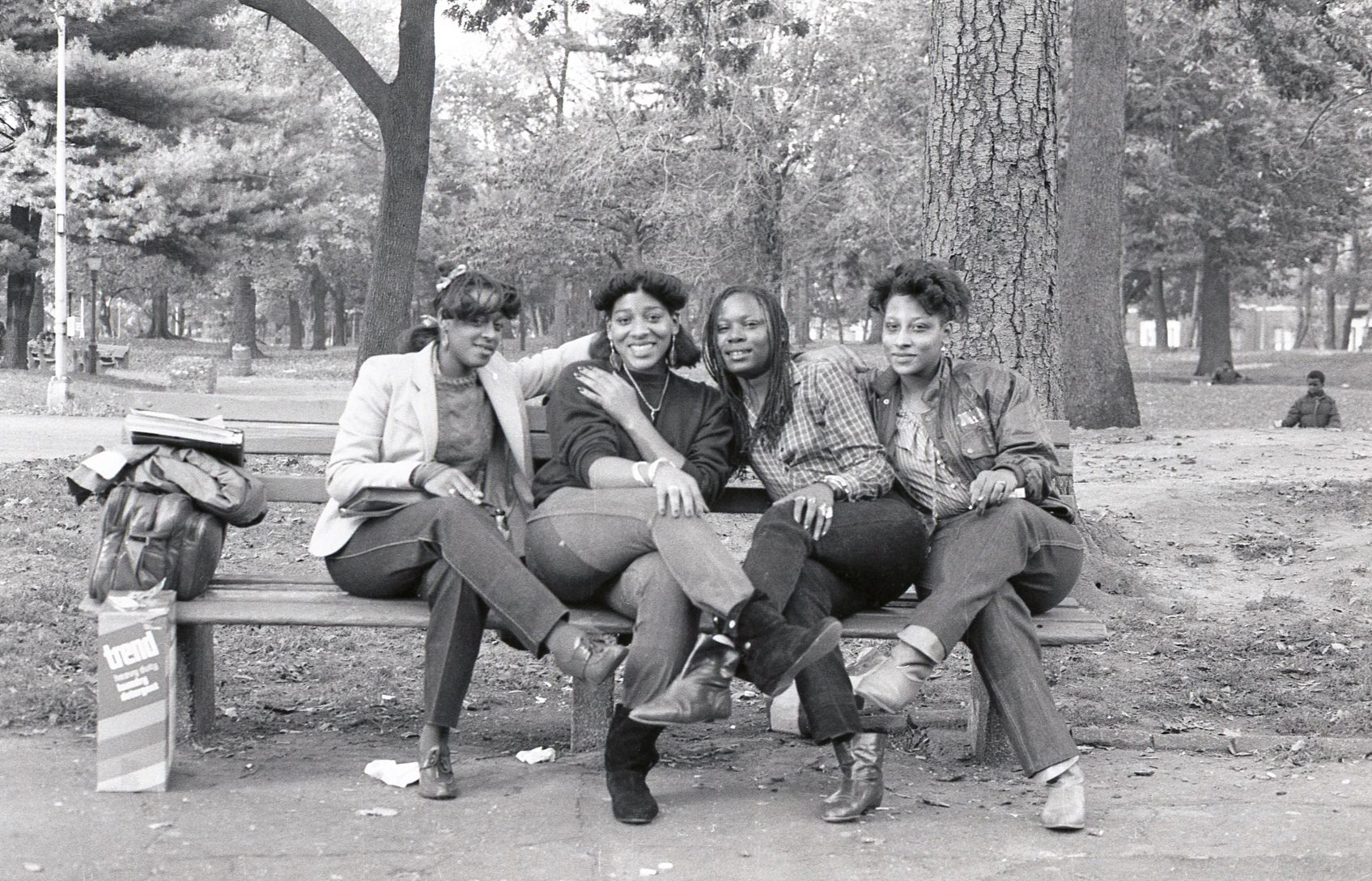 Jamel Shabazz’s photographs are a love letter to Prospect Park
Jamel Shabazz’s photographs are a love letter to Prospect ParkIn a new book, ‘Prospect Park: Photographs of a Brooklyn Oasis, 1980 to 2025’, Jamel Shabazz discovers a warmer side of human nature
